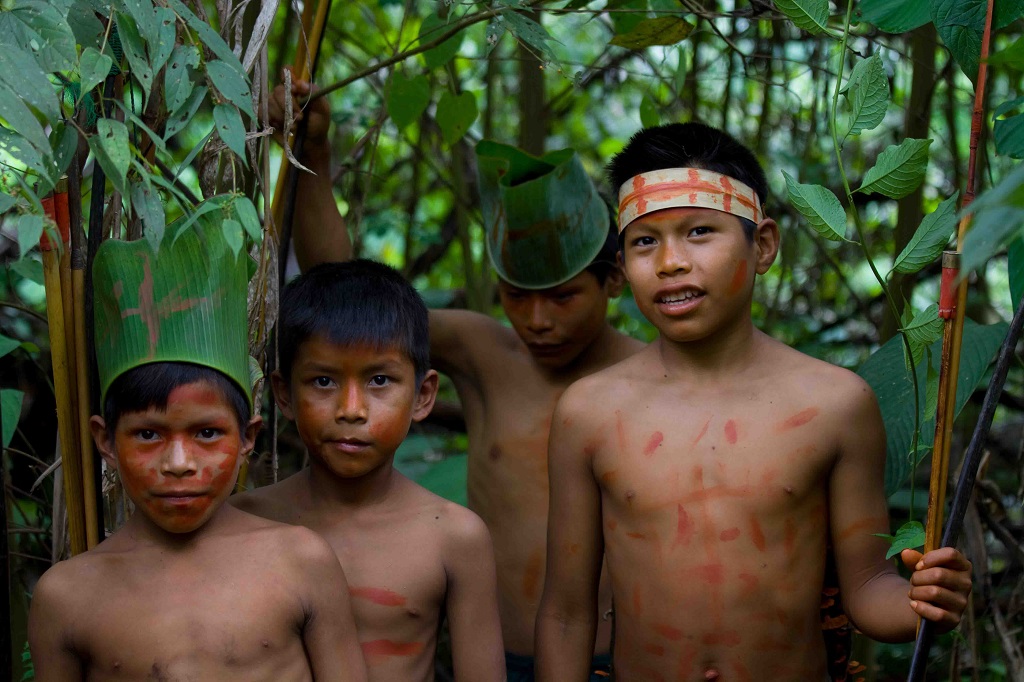
Global Paper Profiteer Threatens Forests
And Lives of Colombia’s Misak People
SumOfUs — Fighting for People over Profits
After more than 50 years of struggle by peasant communities who have faced all kinds of environmental and social destruction, the highest court of Cauca Valley has ruled against the industrial plantation company, Smurfit Kappa Cartón Colombia.
(December 8, 2021) — A brave Indigenous community has finally found a way to stop one of Europe’s paper giants from decimating the Colombian rainforest. And they could use our help to keep their resistance going.
For decades, paper company Smurfit Kappa has wiped out huge swaths of irreplaceable forest to mass-plant the invasive species they use to make packaging materials — drying up the water supply for local communities and destroying the local ecosystem.
Just months ago, the Misak people decided to take on Smurfit by camping out on their land in protest.And it’s working: they’ve been able to stop 70% of the paper giant’s activity! 500 protesters have stayed there day and night, but the company’s attacks are escalating. Security forces have started attacking the protesters, injuring and even killing them.
The Misak community is refusing to give up, but desperately needs our support. They need money to buy food, equipment, and shelter to keep their protest going.
The Indigenous Misak people have lived in the Cauca region of Southern Colombia for thousands of years. This land is part of their cultural identity and is full of sacred spaces.
But Smurfit Kappa has scooped up the most fertile land in the region and is destroying it all to make paper. By planting non-native eucalyptus and pine to cut down to use for their packaging, the paper giant has dried up the nearby river, leaving the local communities without the water they need to survive.
For decades, the powerful multinational has gotten away with it. It convinced the Colombian government to give it big chunks of land, bought up tens of thousands of additional hectares, then lobbied the government to change laws so it could say these dirty tactics are ‘legal’. Now to top it off, it’s sending the police to attack Indigenous communities who dare to fight back.
The protesters have already faced 40 attacks, and many have been injured. In August, a young man, Huver Samir Camayo, was shot dead by the police.
Despite all this, the Misak community isn’t giving up. They say they won’t stop their protest until they get their land back, but they desperately need financial support to keep going.Together let’s help power their protest and support other Indigenous communities around the world:
When the SumOfUs community comes together to rally behind Indigenous groups fighting against corporate greed, we can make a massive difference. Now let’s rally behind the Misak people to help them reclaim their land.
Thanks for all that you do,
Allison, Alys, Yasmin and the SumOfUs team
Smurfit Kappa in Colombia:
Chronicle of a Death Foretold
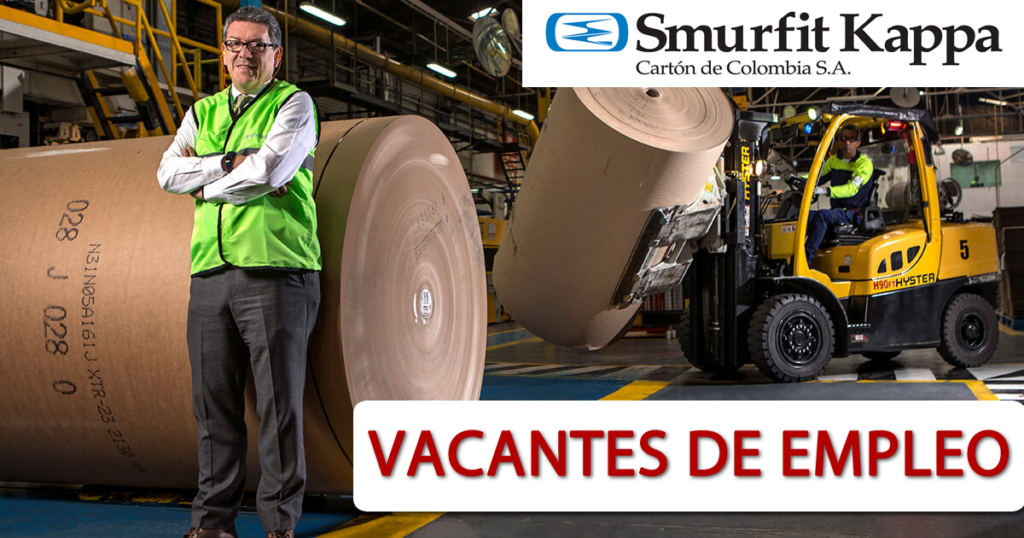
World Rainforest Movement
(March 5, 2020) — Part of this title is taken from a literary work by Colombian author Gabriel García Márquez, who is known as one of the exponents of magical realism — a literary movement characterized by the telling of unusual, fantastical and irrational events within a realistic context, where the supernatural is part of ordinary reality. This specific article is not intended in any way to be part of a literary movement, but simply be a narration of unusual events, with fantastical and mostly irrational tales — within a realistic context.
The consequences are from tragic realism, due to results that occurred in a place in Colombia, which will be shown. In this place, ordinary reality has been transformed by the multinational corporation, Smurfit Kappa Cartón de Colombia (SKCC), perhaps with the complacency and collusion of those who should have prevented it.
Restrepo, Valle del Cauca, Colombia, South America, is a small municipality that was founded in 1913. It has a population of about 17,000, divided equally between rural and urban inhabitants. It has five public education institutions, one of which has an agricultural emphasis.
Restrepo was traditionally one of the most important coffee-producing areas in the country. This crop employs several workers per hectare in the planting, maintenance and harvesting seasons — which includes two harvests, the main one and the secondary one. The owners of these lands used to be locals for the most part. They would also plant banana and other fruit trees for shade, and when the coffee was newly planted, they would use the area to plant legumes. There was sufficient water of good quality for all necessities, and most of all, there was a wealth of flora and fauna. The traditional peasant market, which is still held on weekends, used to be exuberantly rich in the quantity and variety of products. There was a lot of supply and many buyers, which made for rich and nutritious household diets. All of this strengthened a healthy local economy, where a good amount of money circulated.

The Unusual Events
An Irish company that was founded in 1934 to manufacture cardboard boxes and packaging for the Irish market was acquired by Jefferson Smurfit in 1938 and took his name, In 2005, after several mergers, it became Smurfit Kappa Group, which has a presence in several countries in Latin America and Europe. It is currently one of the largest producers of paper-based packaging in the world.
In 1957, the company, Celulosa y Papel de Colombia S.A. was created (Pulpapel) — composed of the Institute of Industrial Development (IFI, by its Spanish acronym), Cartón de Colombia, and the Container Corporation of America (CCA, bought by Jefferson Smurfit in 1986). Cartón de Colombia acquired both companies in 1994, and Smurfit Cartón de Colombia company was established. In 2005 it became Smurfit Kappa Cartón de Colombia (SKCC).
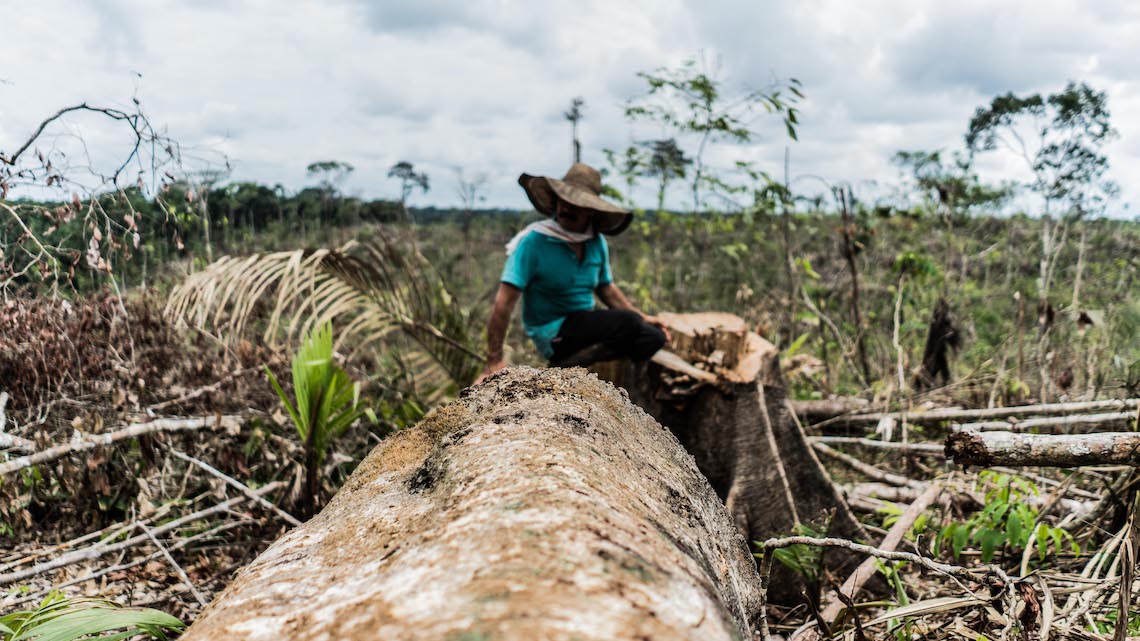
The Irrational Events
In 1959, the Law of National Forest Economy and the Conservation of Renewable Natural Resources came into effect. Through 18 articles, this law facilitates “the development of the forestry economy.” It declared “Forestry Reserves areas to fallow lands located in river basins that provide or can provide water for domestic consumption, electric energy production and irrigation.” The Law also stipulates that “the Government will regulate logging in public and private forests, as well as patents for sawmills and the granting of concessions” (1).
With this new provision, zoning in Colombia was carried out, establishing areas designated for forestry use. This is how the municipality of Restrepo came to be included in areas designated for this use, starting a process of change in the use of the territory — which went from being an agricultural area to a forestry area. It is important to highlight that, upon establishing the forestry use of “protection,” Congress unveiled laws and decrees that “declare[d] industrial cultivation” of conifers as species that conserve soil, water, flora and fauna. It also unveiled proprietary incentives to “reforest,” such as, for example, the well-known carbon credits of today (2).
In 1978 the Pulpapel company — now known as SKCC — started purchasing land in the department of Cauca, in order to introduce and expand pine tree cultivation in this territory. Some of these properties were in the process of being reclaimed by Indigenous paeces communities, who consider this to be ancestral territory. These claims had been ongoing since the 1960s. The Indigenous people occupied these properties in order to expel the multinational corporation from their territory. This was also to prevent the expansion of this monoculture, given that in a short amount of time, the multinational company had installed eucalyptus trees in an area of approximately 1000 hectares. These communities witnessed the destruction of native forests and their replacement with timber plantations (eucalyptus and pine).
As an immediate result, the Indigenous people were evicted by the Army, leading to violent acts, the filing of criminal lawsuits, imprisonment of some Indigenous leaders, as well as some murders. Despite these events, the communities continued with their mission to recover their territories several years later (3).
Despite the “positive appearance” of the 2nd Law of 1959 on paper, new laws and regulatory decrees continued to favor the industrial planting of conifer monocultures. However, in the municipality of Restrepo, there is not a single peasant or legal entity — with the exception of the multinational company, SKCC — that makes a living or benefits from this forestry activity. This situation is repeated throughout the country.

The Fantastical Events
At almost the same time that industrial plantations in Cauca were set up, coniferous trees began to be planted in the municipality of Restrepo. This was presented as incentivizing job opportunities in the region, with the seeming benefits of being linked to a multinational company. The peasantry saw Cartón de Colombia as an opportunity to improve the municipality’s economic development and therefore their quality of life.
In 1983, several residents of Restrepo spoke at a municipal council meeting, lodging the first complaints about the changes in flora and fauna and the deterioration of lands. This became the first action in a very long chain of complaints, with no response, before the municipal administration and the Autonomous Corporation of the Cauca Valley (CVC, by its Spanish acronym) — the legal environmental authority.
In 2007, Colombian social and human rights organizations brought this case before the Permanent Court of the Peoples, Colombian Chapter (TPP Colombia, by its Spanish acronym). SKCC was accused of destroying rainforests, Andean forests and other ecosystems; of destroying the social fabric and the traditional and cultural means of production in the communities; of exhausting and contaminating water sources; of influencing the development of governmental policies in the country and pressuring state officials to favor the multinational’s interests to the detriment of local communities; of hiding information related to the company and manipulating regional and national media; of using false postulates, false information and false advertising to justify its activities and cover up the impacts it caused; and of using false arguments to criminalize those who decried its wrongdoings (4).
The Realistic Context
It is 2015. The Restrepo area is affected by an intense summer. Some political administrative divisions of the municipality have no water for almost three months. The ACUAPALTRES rural aqueduct serves that area; one of the springs that feeds into it is located on the top of the mountain, and it has already been affected by the nearby planting of conifers. ACUAPALTRES representatives, along with community leaders from the municipality, launch working groups to reconcile with the municipal administration, the environmental authority and the multinational company — without reaching any agreement.
The main issues the working groups focus on are: the substantial decrease in water capacity; the high turbidity caused by desertification in planting and harvesting; the planting of conifers less than a meter from both springs and the intake channel of the rural aqueduct; the fact that horses should not be used to collect logs in areas near the channels, so as to avoid contamination from their feces; and the little- or non-intervention of the environmental authority, CVC, to control compliance with the regulations and issue sanctions when they were called for.
After not reaching any agreement, the people decide to initiate a popular action; that is, a constitutional and legal tool that seeks to defend fundamental rights.
In the process of gathering evidence, the multinational company requests an expert opinion from a Colombian university of their choosing. So the investigation is not carried out with the University of the Valley, which is in the region and has enough expertise on the issue. There are 26 annexes of documents, photos, videos and analyses — 80% of which are issued by some kind of authority on the water issue.
January 2019. The highest court of the Cauca Valley issues a ruling that is favorable to the community. It includes the operative part of eleven mandates, largely accepting the plaintiff’s petitions. Number 5, in particular, says: “The Regional Autonomous Corporation of the Valley — CVC — is ordered to carry out a new investigation on Smurfit Kappa Cartón de Colombia S.A. within one (1) month, regarding the improper use of pesticides (herbicides, insecticides and others) on existing planted forest in the protected area.” And Number 11 says: “Smurfit Kappa Cartón de Colombia is ordered to observe the protocols established by the Forest Stewardship Council-FSC, regarding the use of pesticides in planted forests; and must observe i) application far away from springs and waterways, ii) minimal use of these products in aqueduct catchment areas and downstream use, and iii) adequate provision of packaging containers for agrochemicals.”
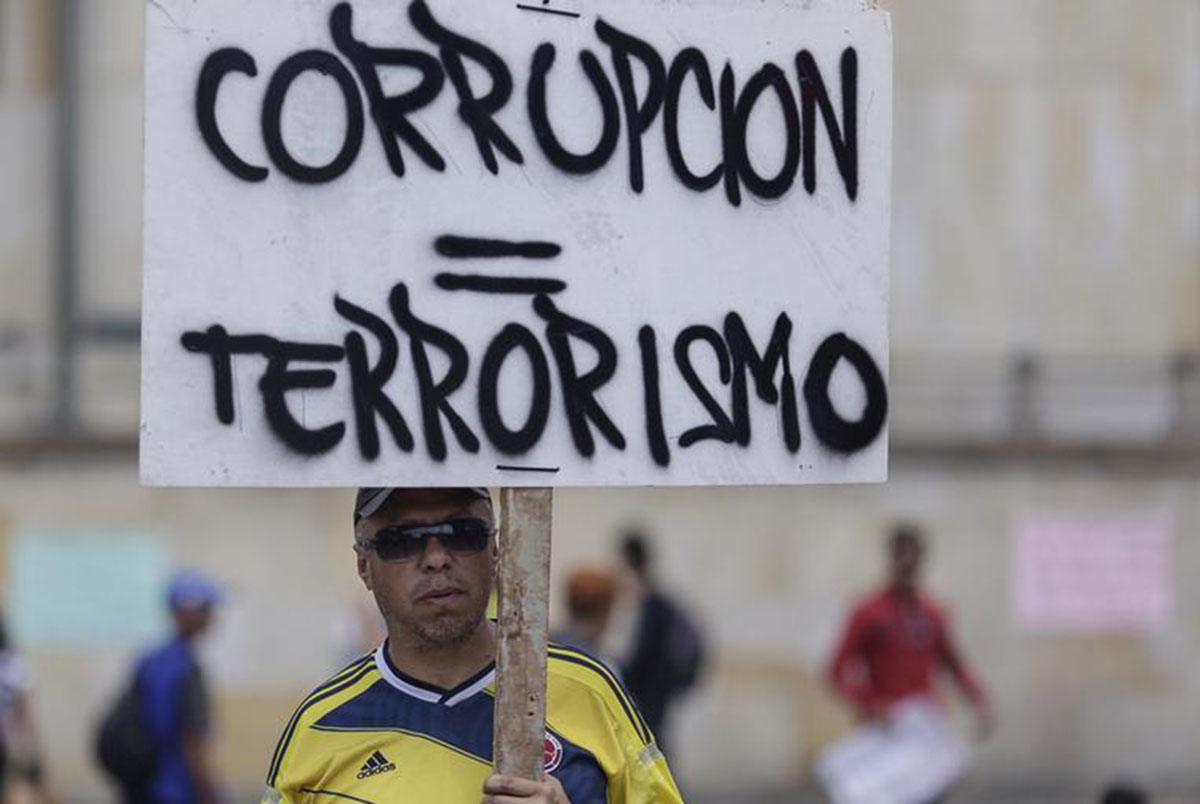
Ordinary Reality
In Colombia it is no secret that politico-family and economic groups are the ones who manipulate decisions about land and its monopolization in the country. The people who took power on July 20, 1810 — the alleged date of our independence, more aptly called “relieved of masters” — are the same ones who remain today. Not surprisingly, Colombia has one the most corrupt political classes on the planet.
The trite development that was intended to convince people in Restrepo turned out to be the opposite of what was promised. Employment got worse; the amount of money circulating diminished; the lands — being as they were not productive — were sold to large investors. The jobs that SKCC offers are of the lowest status, and people are not directly employed but rather contracted through third parties. There are very few positions per hectare and with planting cycles of eight-years.
SKCC has appealed the sentence, which is now before the Honorable State Council. The multinational company is mostly focused on trying to prove that all of its activity is protected by law. But what the popular action sought was for them to comply with the law, to comply with the regulations in protected areas and with the protocols of the FSC — an entity whose existence was known in the expert report.
Therefore the question is: How real is the FSC seal, which “certifies” good practices? Is it false advertising? Institutional deception? A corporate campaign to improve its sales in other markets?
The “Tragic Realism” is still a held in a bit abeyance. We are certain that the Honorable State Council will ratify the first court’s judgement (a favorable sentence for the community). And then we will be able to say that it could become “Magical Realism,” — when the modern version of David and Goliath is repeated.
Once the judgment is ratified — and because it is “erga omnes” — its applicability will be “with respect to all,” or “against all” actors who cause damage to water resources in similar circumstances.
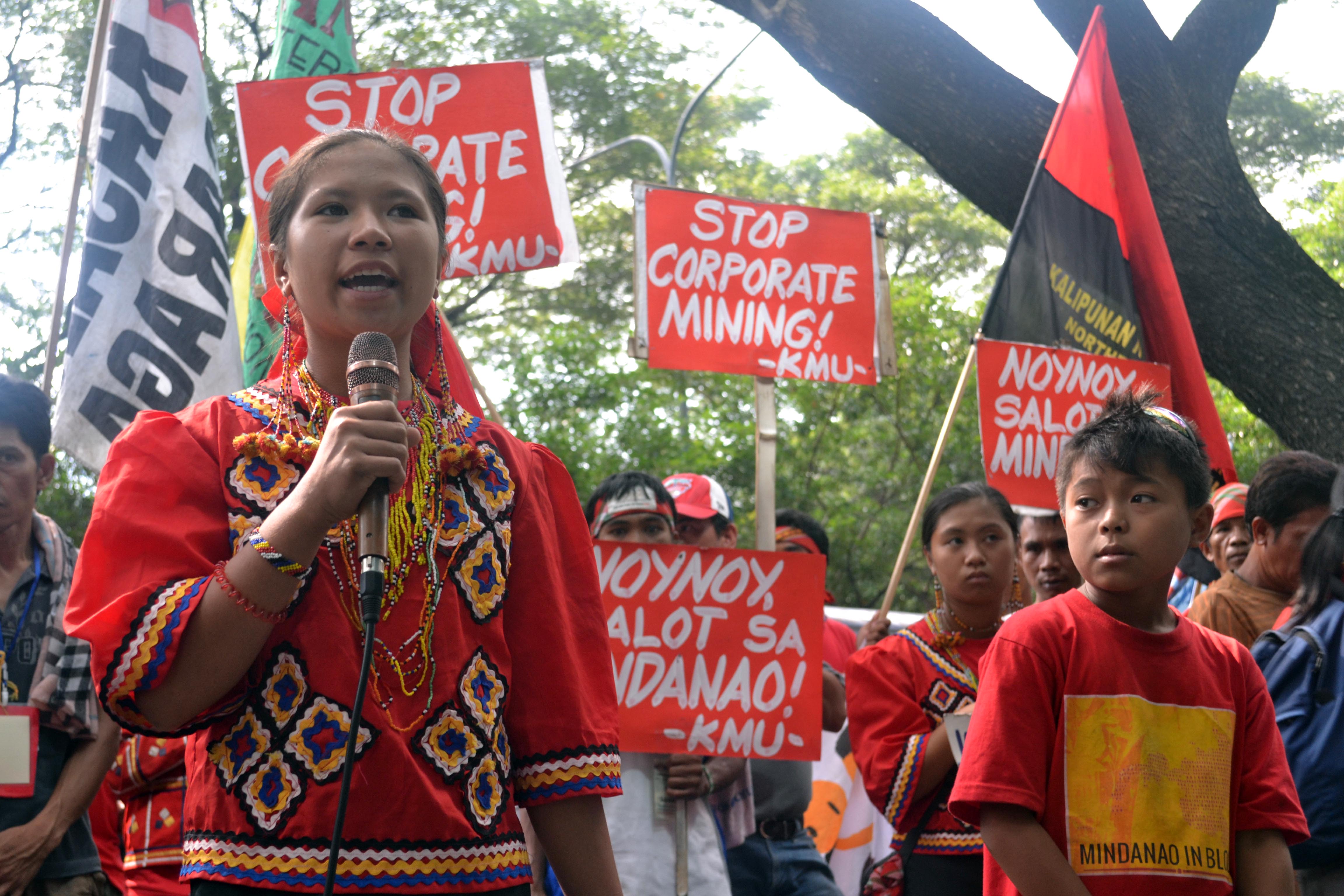
The End
The popular action was the last tool, after having exhausted all legal and conciliatory means — not only with the multinational corporation, but also with the CVC and the municipal administration. However right now, peasant communities across Colombia unfortunately do not have the economic, administrative and legal resources to effectively defend their basic rights. Still, their struggles go on.
(1) Congress of Colombia (January 27, 1959) Sobre Economía Forestal de la Nación y Conservación de Recursos Naturales Renovables (Law 2 from 1959).
(2) Colombia: legislación a la medida de Smurfit, WRM Bulletin, February 2001
(3) Analysis of Smurfit Kappa Cartón Colombia, 2011
(4) Permanent Court of the Peoples. Colombia hace frente a la problemática de la destrucción de la Biodiversidad. Grave violación a los derechos humanos, Grupo Semillas, 2007
Further Reading
• Obstruction of Peace; Militarization and the Final Peace Accords,
Witness for Peace. 1 November 2019.
• Smurfit-Kappa, Colombia
Environmental Atlas Justice. 8 June 2016
Posted in accordance with Title 17, Section 107, US Code, for noncommercial, educational purposes.